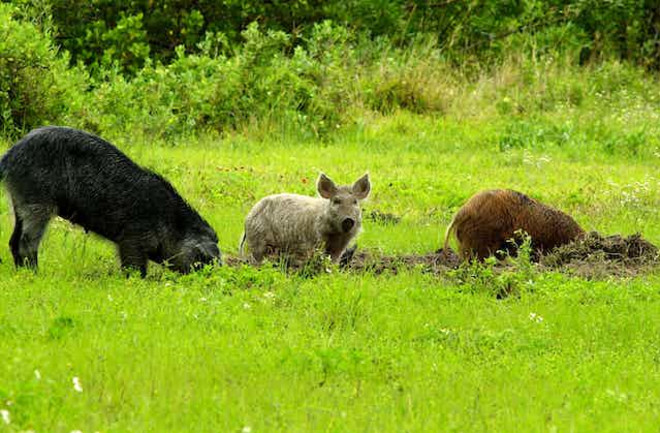They go by many names – pigs, hogs, swine, razorbacks – but whatever you call them, wild pigs (Sus scrofa) are one of the most damaging invasive species in North America. They cause millions of dollars in crop damage yearly and harbor dozens of pathogens that threaten humans and pets, as well as meat production systems.
Although wild pigs have been present in North America for centuries, their populations have rapidly expanded over the past several decades. Recent studies estimate that since the 1980s the wild pig population in the United States has nearly tripled and expanded from 18 to 35 states. More recently, they have spread rapidly across Canada, and these populations are threatening to invade the U.S. from the north.
The wild pigs in Canada are unique because they were originally crossbred by humans to be larger and more cold-hardy than their feral cousins to the south. This suite of traits has earned them the name “super pigs” for good reason. Adults can reach weights exceeding 500 pounds, which is twice the size of the largest wild pigs sampled across many U.S. sites in a 2022 study.
As a wildlife ecologist, I study how wild pigs alter their surroundings and affect other wildlife species. Early detection and rapid response is of utmost importance in eradicating an invasive species, because invasions are more manageable when populations are small and geographically restricted. This is especially true for species like wild pigs that have a high reproductive rate, can readily move into new areas and can change their behavior to avoid being captured or killed.

